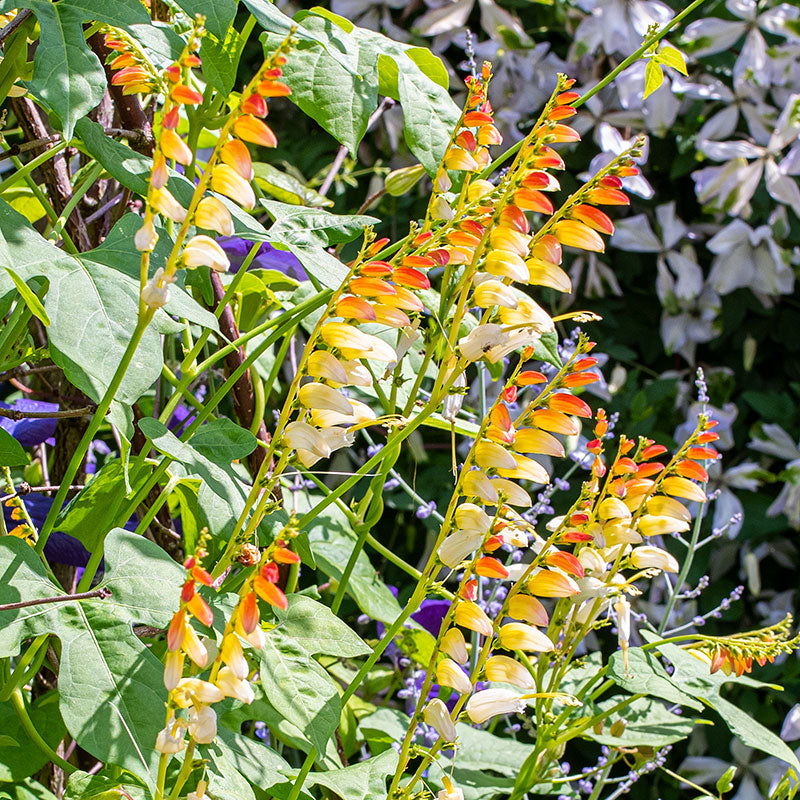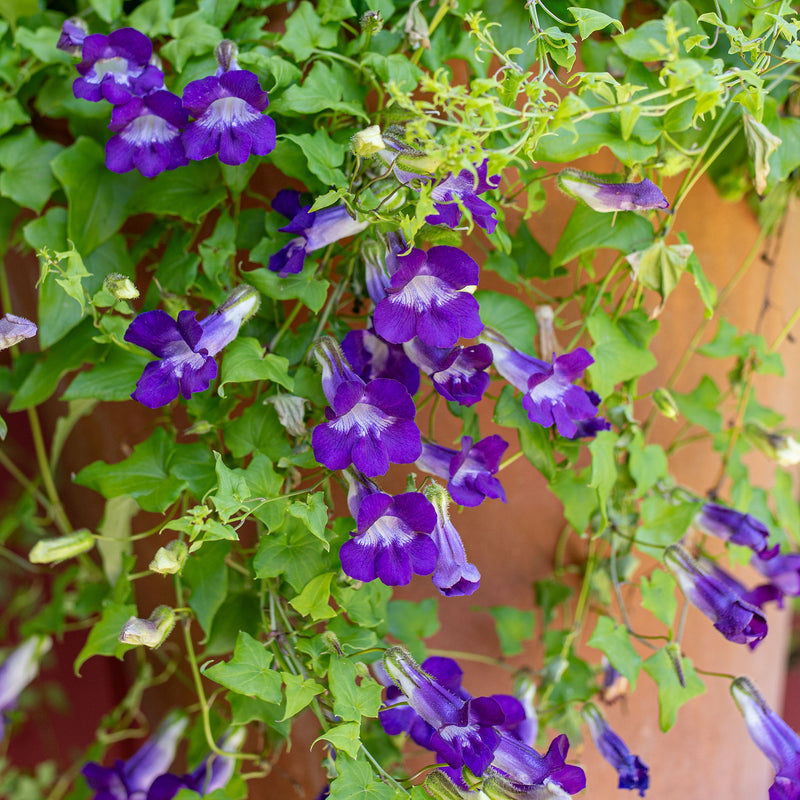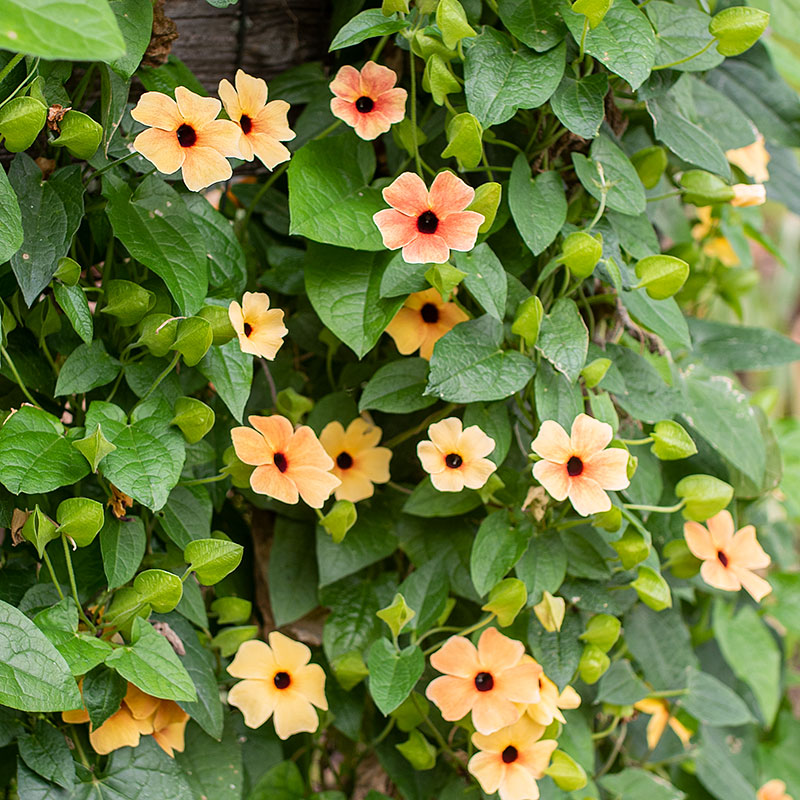Seed Packet
Asarina 'Sky Blue'
Asarina scandens
A member of the snapdragon family, also known as chickabiddy, asarina is native to Mexico, where it reaches great heights. A choice selection for pots and window boxes, where the lovely fresh-green leaves and tendrils will climb or spill over, displaying masses of flowers.
SKU #S910
Growing Companions









































